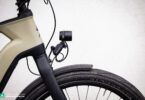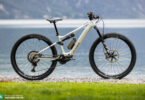With the Bosch Performance Line SX motor, the German manufacturer has unveiled a new drive unit that’s supposed to score points with its low system weight and natural ride feeling. We’ve already tested one for you to tell you what it’s capable of and whether it’s only suitable for sporty riders.
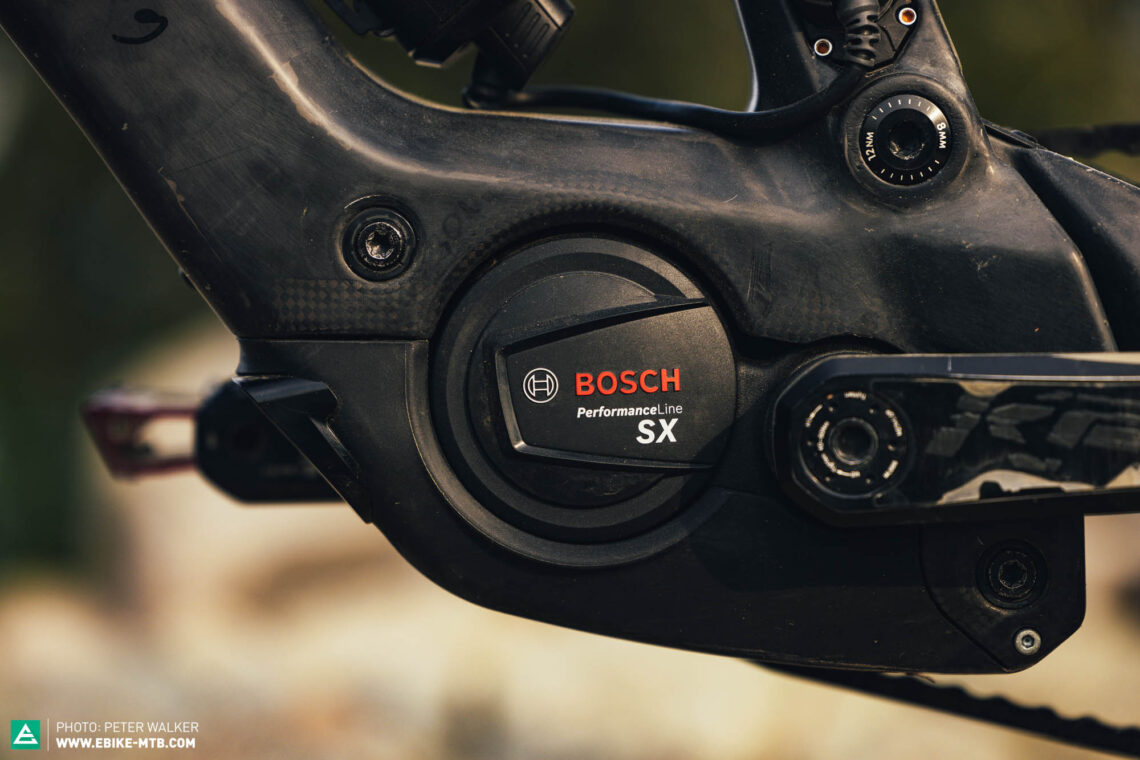
Bosch needs no introduction. Not only is the German tech giant one of the world's leading automotive suppliers, but also one of the major manufacturers of ebike motors. Their bicycle department is so big, in fact, that it operates as a separate business unit. Unlike most of their competitors, Bosch only offer a closed ecosystem, which can be configured with countless battery, remote and display options. With their ebike drives, the German manufacturer focuses on quality and functionality, and provides a large service network as an integral part of the closed ecosystem. Bosch aim to offer a full range of products: in a nutshell, their portfolio covers the entire ebike spectrum, from motors for urban and cargo bikes to e-drives for S-pedelecs and eMTB motors. Up until now, the German manufacturer has focused mainly on powerful motors, like the Performance Line CX Smart System, which was introduced in 2021. For the 2023 season, however, they’ve finally joined the light motor party, launching the Bosch Performance Line SX, a mid-drive motor that is both smaller and lighter than any of Bosch’s current models. It’s aimed primarily at sporty riders and was developed specifically for light eMTBs, gravel bikes and urban bikes. For the U.S.A. and New Zealand market, Bosch are also releasing the Speed variant, which reaches a higher peak speed of 45 km/h. We put the new Performance Line SX through its paces for you to find out what it’s capable of.
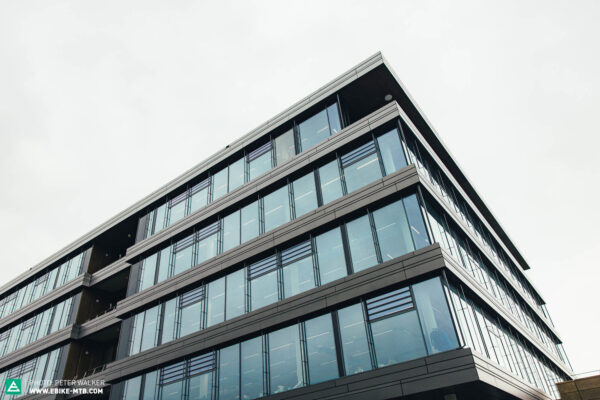


The new 2023 Bosch Performance Line SX motor in detail
With its unmistakable silver Bosch logo and red lettering, the Performance Line SX is distinctly recognizable as a Bosch motor. The drive is enclosed in a black magnesium housing, which has a similar shape to Bosch’s full-fat motor, the Performance Line CX. The Performance SX also relies on the same basic layout as its bigger brother, with the axle sitting right behind the motor rather than passing straight through it – as is the case with the TQ HPR 50 motor, for example. As a result, Bosch’s light motor isn’t as compact as other drives in its segment. Despite the visual similarities with the Performance Line CX drive, the SX motor offers less support, and forgoes a third support level. Due to the different gear ratio, the motor is most efficient at higher pedalling cadences, meaning that it delivers its full power when you pedal fast. As a result of the missing support level, the Bosch Performance SX is more compact than its full-fat Performance Line CX counterpart (around 20% smaller) and also lighter, tipping the scales at 2.05 kg. The SX is an all-weather system with a protection rating of IP54, while the Q-factor has been narrowed down from 178 mm to 160 mm to provide a more natural pedalling sensation, positioning the pedals closer together to replicate the feel of an analogue bike.


In terms of power, the Bosch Performance SX delivers 55 Nm of torque, with a peak output of up to 600 watts. That’s right, at peak! In other words, the motor doesn’t provide its maximum power continuously, but regulates it dynamically through the software, which calculates a moving average of the rider’s own power input. As long as you provide a certain average physical effort, the motor assists you with up to 40 Nm torque. If you pedal harder, exceeding your previous average, the motor churns out up to 55 Nm torque. As a result, you reach the peak power only in dynamic riding situations, whereby the software also ensures a good balance between natural ride feeling, decent range and de-rating, which is a decrease in power when the motor is under heavy load.

The new Bosch Performance SX motor features for four riding modes with just as many support levels. Alongside Bosch’s classic riding modes, there’s a new progressive support mode called Sprint, which adjusts the assistance according to the pedalling cadence. Simply put, the faster you pedal, the more the motor assists you, with up to 280% support. This is meant to encourage you to work harder under your own steam, and at the same time adds to the sporty aspect of cycling. On e-mountainbikes, the new Sprint mode is replaced by another progressive mode called EMTB, which, like Turbo mode, provides up to 340 % support. Ultimately, however, it’s up to bike manufacturers to decide which configuration suits their bikes best. Moreover, the eBike Flow app allows you to adjust the characteristics of the individual modes, including their dynamic behaviour, maximum torque, the strength of the support, and speed (within the framework of the legal regulations). Furthermore, the app provides training-specific data, like the amount of calories you burn while riding.
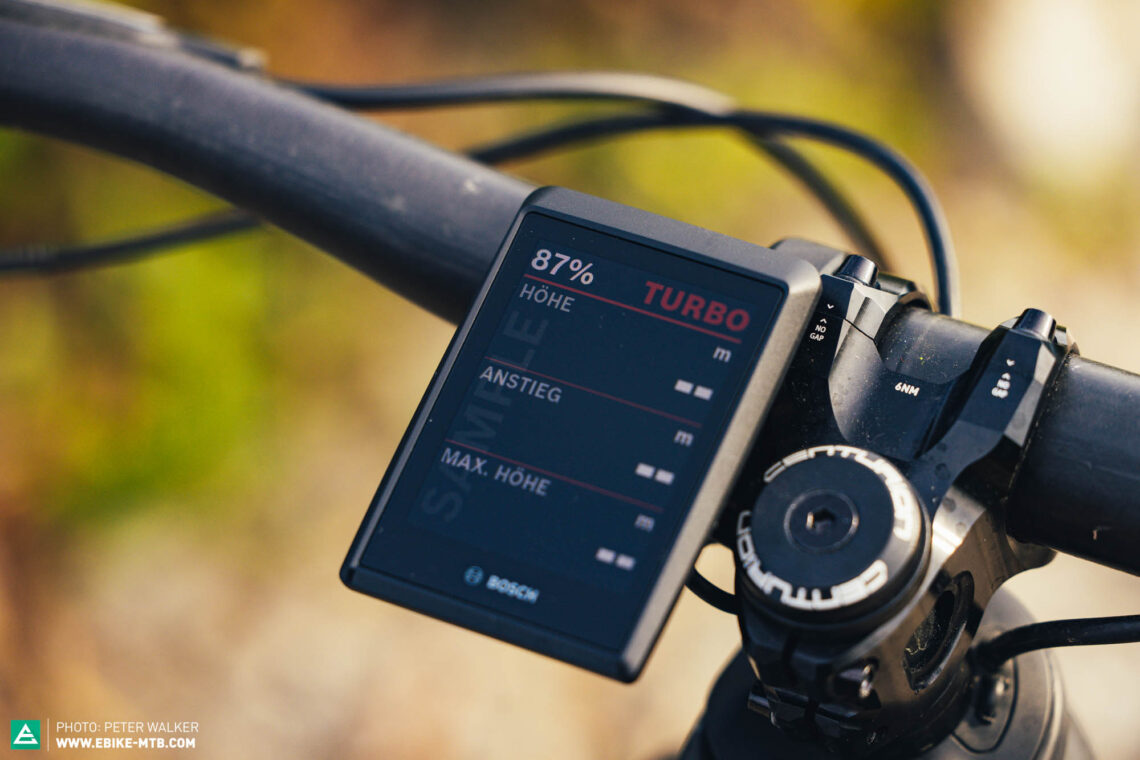
The battery options of the 2023 Bosch Performance Line SX motor.
Needless to say, the new Performance Line SX motor would be nothing without electricity. That’s why Bosch also introduced a brand-new battery, the CompactTube 400. As the name suggests, it has 400 Wh capacity, and it tips the scales at around 2 kg, bringing the total weight of the drive system (battery and motor) to just 4 kg.
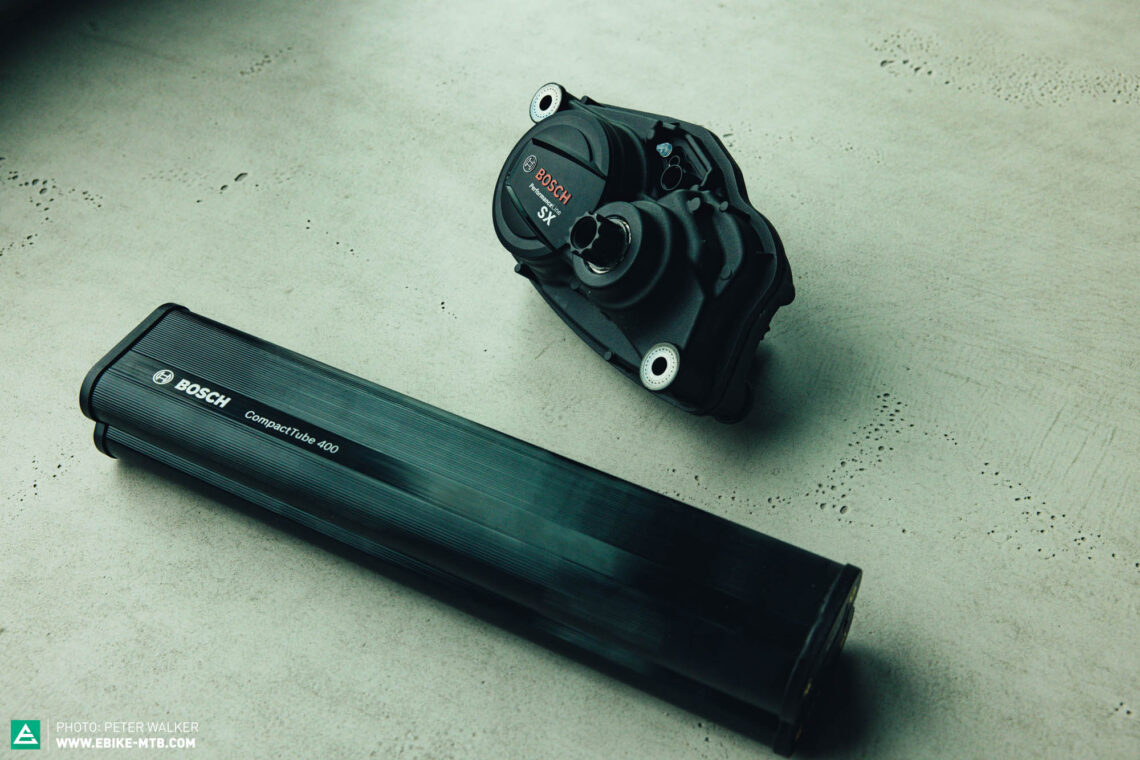
If you want to embark on epic backcountry expeditions, you can expand the standard battery with the optional 250 Wh PowerMore range extender, which can be secured to the bottle cage mounts. This ensures a total battery capacity of 650 Wh, allowing you to keep up with many full-fat eMTBs. The range extender weighs an additional 1.6 kg and is backwards-compatible with existing Smart System batteries, meaning that you can combine the Performance Line SX motor with, for example, the 500 Wh PowerTube 500 and all other Smart System batteries currently available on the market. Alternatively, the system can be charged via the new, compact 2 Amp charger, which is meant to be 25 % lighter and 40 % more compact than Bosch’s 4 Amp standard charger – although it doesn’t charge as fast.
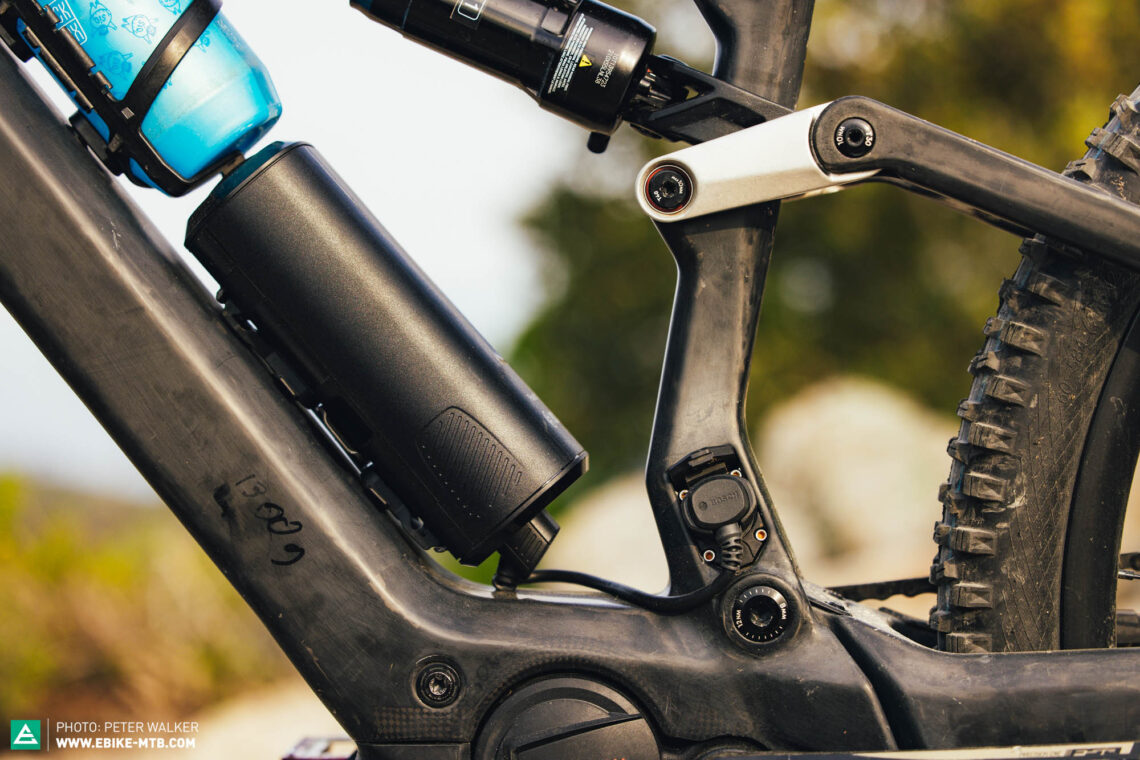
Display and remotes for the new 2023 Bosch Performance Line SX motor
With the Smart System’s Mini Remote and System Controller, Bosch have already proven that they take integration very seriously. The Performance Line SX too, relies on a modular concept, allowing for several different display/remote combos. The product family now also includes the new Purion 200 and Kiox 500 displays. Head over to our news page to read everything about their functions, and to find out what else Bosch have in store for the new season.
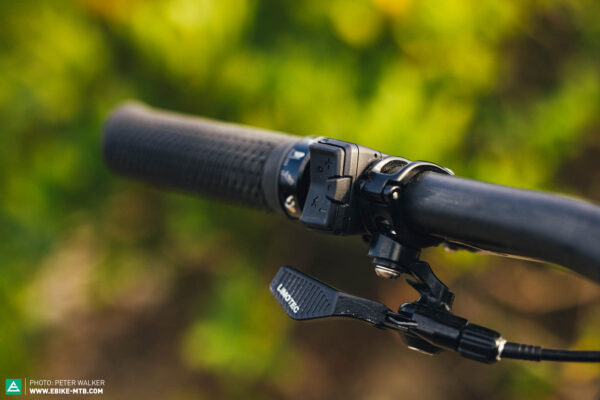
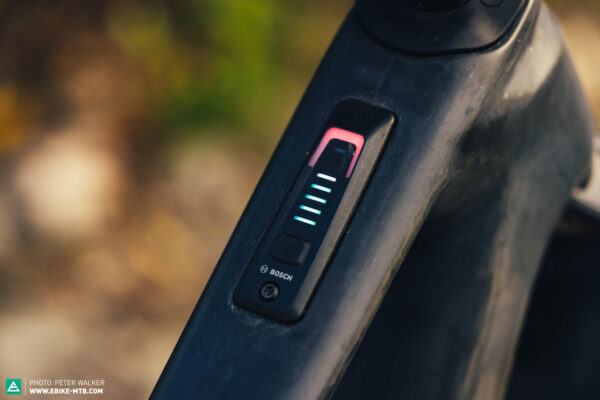

The new 2023 Bosch Performance Line SX motor in our practical test
There are countless factors that determine the performance of a modern bike, which is why the motor should never be considered in isolation, but rather seen as part of a delicate ecosystem. In other words, it all comes down to the consistency of the overall concept, and the best motor is only as good as the bike it’s part of. Overall, the Bosch Performance SX covers a wider range of applications than most of its light competitors, bridging the gap between light and full-fat eMTBs. Of course, this makes it suitable for a huge variety of riding scenarios. Moreover, it delivers its power eagerly right from the first pedal stroke, pushing noticeably harder than its main competitors, the FAZUA Ride 60 and TQ HPR 50. At the same time, the Performance Line SX delivers a very natural ride feeling, with the smooth transition above the 25 km/h threshold contributing significantly to the experience, especially when riding on gravel paths and fire roads.

The Performance SX is an excellent option for both your average cyclist and for sporty riders. That said, Bosch’s light motor requires a slightly higher cadence to fully develop its power, but supports you willingly once it gets there, even on steep, technical climbs. Especially in technical terrain, the sustained response allows you to negotiate bigger roots and small steps without pedalling. However, at higher pedalling cadences, it can be easier to smash your cranks into obstacles, so you’ll need to time your pedal strokes carefully. When negotiating slow, technical climbs and tight switchbacks that force you to pedal slowly, the Performance SX requires significantly more physical input than other motors. These situations highlight that the motor struggles to deliver its power at lower cadences. While in visual terms, the Performance SX might be less discreet than other light motors, it’s impressively quiet, working discreetly in the background at slow cadences of around 50 RPMs, allowing you to enjoy the silence of nature while pedalling through the forest. With increasing cadences and higher loads, the motor emits a faint whirring sound that is quickly drowned out by surrounding ambient noises.
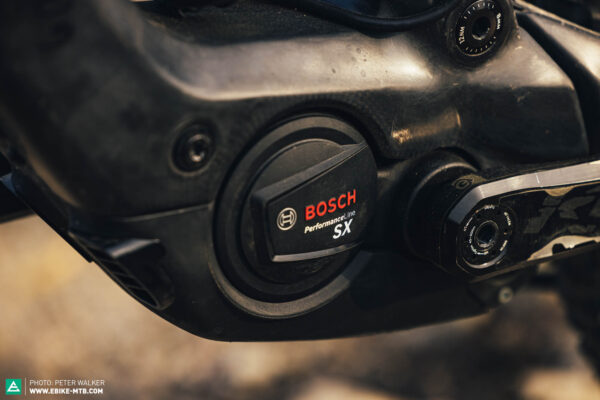
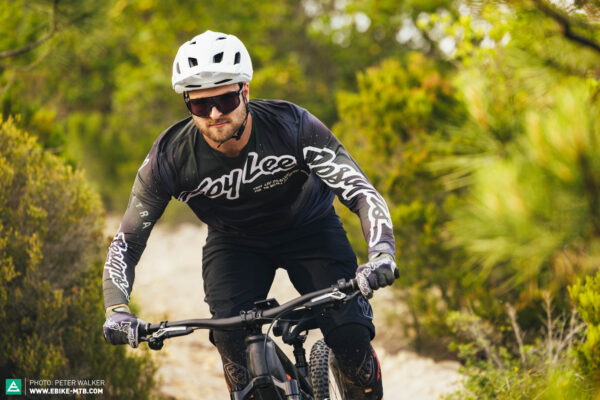
Our conclusions about the new 2023 Bosch Performance Line SX motor
The Bosch Performance Line SX drive system is neither an innovation, nor a pioneer of a new segment. The motor provides powerful assistance and a natural riding experience, bridging the gap between light and full-power e-mountainbikes. For bike manufacturers, the modular concept enables countless battery/remote/display configurations. Sporty riders will benefit from the motor’s dynamic power delivery, which provides additional power in critical riding situations, while end users in general can enjoy all the advantages of the excellent connectivity and Bosch’s global service network.
Tops
- Natural ride feeling
- Modular concept
- High level of connectivity
Flops
- Less discrete and harder to integrate than its direct competitors
- Little support at low cadences
For more information, visit bosch-ebike.com
Did you enjoy this article? If so, we would be stoked if you decide to support us with a monthly contribution. By becoming a supporter of E-MOUNTAINBIKE, you will help secure a sustainable future for high-quality cycling journalism. Click here to learn more.
Words: Mike Hunger Photos: Peter Walker





